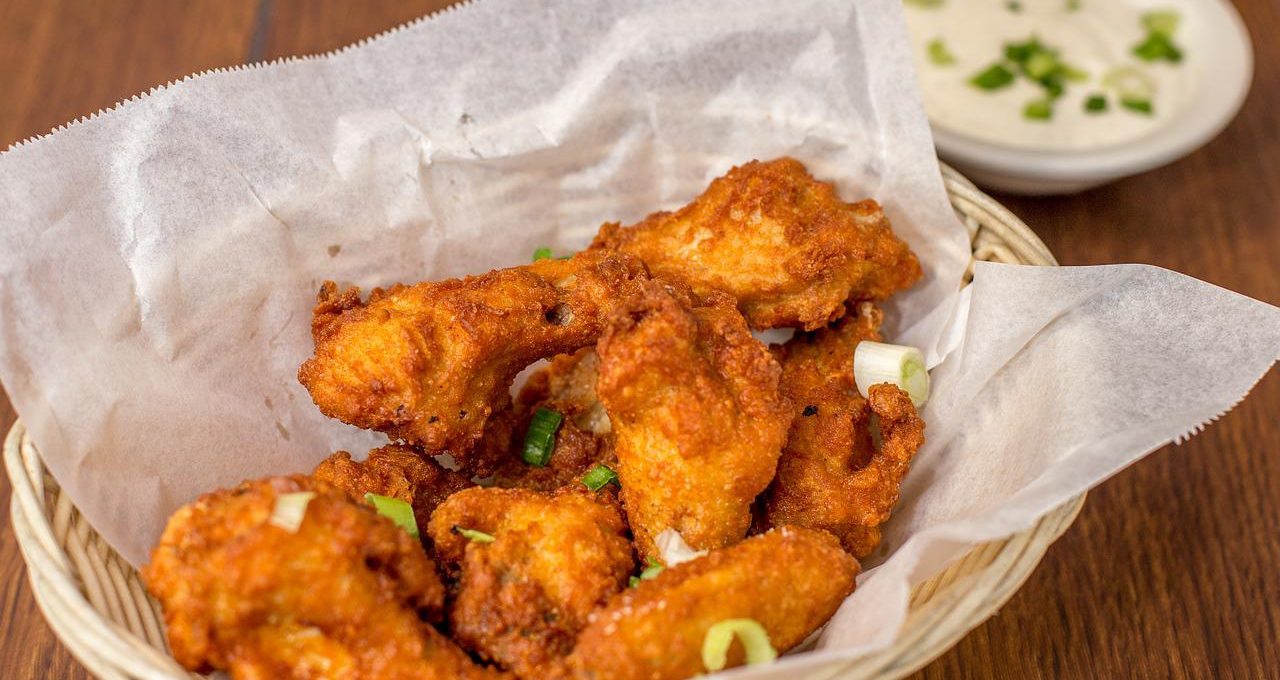America has given the world several products unknown outside North and South America until the arrival of Europeans in the late 15th century. centuries . Some were used to create ready-made dishes, examples of culinary art virtually unknown outside their country of origin. Others became popular around the world. Plants native to the Americas created foods that later became important parts of diets around the world, including corn and the humble potato. Corn is the English name for maize, which grows in America. and is currently the most widely collected cereal grain in the world.
Native plants and game, as well as those grown by farmers, have created prepared foods that remain relatively unknown outside America, and for many who visit, have certainly become acquired tastes. Others, like American-made cheeses, have become popular in Europe and Asia. Here are 10 foods born in America from local ingredients, some widely known and others less so.
10. Cornbread
Domesticated corn, which the English-speaking world calls maize, originated in Central America and spread throughout South and North America before the arrival of the Spanish in the late 15th century. centuries The Spanish and Portuguese found the natives eating ground corn mixed with water and baked on stones or in ovens. When Europeans landed in North America, they found the native tribes doing the same. English settlers adopted the practice, although they also cooked the ground corn into a thick porridge, known today as spoon bread .
The development and widespread availability of leavening agents such as baking powder allowed the mush mixture to be baked rather than boiled, and the result was cornbread. Cornbread was carried by laborers for lunch, school children, and travelers for sustenance between distant and often questionable dining halls. Later, it was baked in muffin tins, in cakes, in special cast-iron molds resembling an ear, and in loaves. In devout Puritan New England, it was baked before the Sabbath for consumption the following day. became widely popular , especially among less affluent North Americans. It was much more affordable than bread and cookies made from expensive wheat flour.
Cornbread, leavened and baked in a cast iron skillet, became especially popular in the antebellum South and remains so to this day. In New England of the same era, the dish was known as corn pie and was usually made from ground corn, butter, salt, and flour. Today, sugar is often added. Cornbread may well take its place as the national bread of America, just as the baguette is the national bread of France. Although not widely eaten in Europe, cornbread is a part of cuisines around the world, which is understandable since it uses the world's most abundant grain.
9. Gumbo
Gumbo is a dish, or rather a class of dishes, unique to the United States, originating from the Louisiana region. The area was a melting pot of French, Spanish, English, African, and Native American peoples and cultures in the late 18th And early 19 -go centuries when gumbo first appeared on tables and in camps. The name itself comes from West African word for okra, the main ingredient of the dish. The flavoring of dried ground sassafras leaves, known today as "filé", comes from Native Americans. Gumbo is based on a thick, dark roux from French cuisine.
Gumbo contains an almost unlimited list of animal proteins, including sausage, pork, chicken, turkey, shrimp, oysters, crab meat, ham, rabbit, beef, and whatever else the cook has on hand. Some specialty gumbos are made for seasonal celebrations. Others are stews cooked over a campfire at fishing and hunting camps. Today, gumbo can be found throughout North America, but it remains most popular in the South, especially in Cajun region of Louisiana. It is usually served with rice, another staple of the region.
According to fans of the dish, gumbo comes in two different versions: Creole and Cajun. Creole is sometimes called New Orleans style gumbo There are so many different recipes and ingredients that it is safe to say that no two gumbos are the same. It is virtually unknown outside the United States.
8. Monterey Jack
In 1770, a second Spanish mission was established in Monterey in what would become California. There, missionaries grew crops familiar to them from Spain, including olives and oranges, and raised livestock. Among the latter preserved milk in the old world manner, turning it into cheese. The soft white cheese served as a food source and also as a source of income when sold. In 1848, following the Mexican-American War, the Treaty of Guadalupe Hidalgo ceded California to the United States.
The discovery of gold in California sparked a gold rush in 1849, followed by an influx of land speculators, including David Jack. Through a series of quasi-legal procedures Jack received title to most of Monterey, including the dairy farms and ranches that had grown in the years following the arrival of the Spanish monks. He recognized the market value of the locally produced cheese and began selling it commercially under the name "Jack Cheese." Over time, it became known as Monterey Jack Cheese. Flavored jacks, such as pepper jack, came much later.
Who actually created the recipe? There is still some debate, and today it is more of a type of cheese than a specific brand. Monterey Jack is a cheese that is best suited for making white sauces, queso, and other Mexican and Californian dishes. Although it is very popular in North America and Mexico, it is not the most popular white cheese among Americans. That distinction goes to mozzarella, which was brought to the United States by the Italians and is widely regarded as an essential pizza topping.
7. Buffalo Wings

Buffalo wings are an American creation, a way of eating chicken wings that has long been disdained by most as an appetizer, a snack, or a means of debating how much spicy heat one can consume. Buffalo, New York, lays claim to being the chicken wing capital of the world, but several organizations in the community make competing claims to being the originators of the dish. American football led to the spread of chicken wings a la Buffalo when the Buffalo Bills went to the Super Bowl, and The pre-game media frenzy revealed the dish on television screens across the country.
Buffalo's Anchor Bar proudly displays a large sign proclaiming that it is a " Home of the Original Buffalo Chicken Wings " At least four other Buffalo establishments dispute that claim. And their dispute is not just a family squabble within the community. There are claims that the idea of dousing fried chicken wings with hot sauce, the essence of Buffalo wings, originated far from the city on Lake Erie.
One such claim comes from a city on another of the Great Lakes. Some food experts have named Chicago as the first to regularly serve the concoction. They appeared in Chicago bars During Prohibition, as part of a "free lunch" that encouraged customers to buy more bootleg alcohol. Chicken wings were so cheap at slaughterhouses that speakeasies could afford to give them away. The hot sauce sometimes called Mumbo sauce originated in a Chicago barbecue restaurant. Sorry, Buffalo.
6. Clam Chowder
The east coast of North America and its tidal estuaries teemed with clams, oysters, mussels, scallops, and other types of shellfish. They were readily available to anyone in the early colonial days, and remained so for over a century. Either New Englanders in Massachusetts or Rhode Island, or fishermen in Nova Scotia invented a dish, known as clam chowder, with the latter argument being the stronger one.
In the New York area, an influx of Italian immigrants led to the addition of tomatoes to clam broth and a style known as Manhattan Clam Chowder Some consider it almost heretical to call it a stew at all. James Beard called the Manhattan version "a pretty awful soup." There are other types of clam chowder that use different ingredients, but all come from North America.
The argument for the Nova Scotian fisherman comes from the name soup . It comes from the French chaudière , meaning "cauldron." French fishermen encountered natives eating clams and edible tubers boiled together in a pot, and adopted the idea, also using other types of seafood they caught. The soup was then thickened with crumbled ship's bread, known as hardtack, so hard that it was almost inedible unless softened. Clam chowder in all its forms traveled across America during the westward migration, and found another ready source of its main ingredient on the Pacific coast.
5. Maple syrup and sugar

English settlers in New England noticed that Native Americans were cutting the bark of maple trees and collecting the sap that flowed from them each spring. The sap was used as a flavoring by boiling food, especially game meat, in the sap. The process sweetened the meat. Only by boiling the sap did maple sugar come out, which the native tribes used as a sweetener or ate as candy. The English quickly adopted this practice. Maple sugar was also a valuable commodity. Maple syrup as we now know it was avoided because there was no practical way to store it.
Maple sugar was traded among the English colonies because it was much cheaper than sugar produced on West Indian plantations. Both George Washington and Thomas Jefferson planted maple groves on their Virginia plantations. By this time, improvements in storage had also made maple syrup a valuable commodity. Washington prized maple syrup on ice cream, one of his favorite desserts at Mount Vernon. Maple syrup production has become a leading industry in the young United States, with New England the leading producer.
The deciduous sugar maple tree, from which the delicious syrup and sugar are derived, grows in the northeastern United States and Lower Canada. Thus, maple syrup and sugar are products that originated in America, and are still consumed there more than anywhere else in the world. Unfortunately, very few of the bottles of syrup found on grocery shelves today contain real maple syrup, which is often simply used as a flavoring for corn syrup. Maple sap for syrup can only be obtained once a year. Today, pure maple syrup is significantly more expensive than its artificial counterparts, and as a result, many Americans have never tried the real thing. That's their loss.
4. Chocolate

Spanish and Portuguese explorers and conquerors of Central and South America discovered that the natives drank a drink made from the seeds of the cacao tree (also called cocoa), a plant then unknown to Europeans. Maya the drink was called xocoatl, which means "bitter water", indicating the qualities of the drink. The ancients used the drink as a health tonic and mitigated the bitterness with various flavorings, although sugar, being unknown to them, was not one of them. Columbus discovered the drink during his fourth voyage, although it was Hernan Cortes who first brought the seeds to Spain in 1528, along with instructions for processing them into a drink.
Cortes is credited with adding sugar to the bitter drink, making it infinitely more palatable, and it became the drink of the nobility, since only they could afford it. The French discovered how to use chocolate in candies in the middle of 17 centuries Later that century, London coffee houses served cakes and buns flavored with chocolate and sugar. Chocolate remained a flavoring or beverage until 1830, when the British discovered a way to harden chocolate for consumption. Finally, in 1875, a Swiss chocolatier created milk chocolate. In 1910, the Swiss government declared Swiss chocolate a national food.
Today, chocolatiers around the world proclaim the superiority of their chocolate products, and they add flavor to dishes around the world. It comes in many varieties, including milk chocolate, semisweet, unsweetened, dark, and more. Very few people associate it with the ancient food and drink known only to the natives of Mesoamerica before the arrival of Europeans in the 15th century. century . Today, Switzerland is the world's largest per capita chocolate consumer, followed by Austria. The Swiss consume almost 19 and a half pounds of chocolate per person per year , which is twice as many as Americans. About 19% Swiss adults are obese, in the US - over 36%. Go figure.
3. Potatoes

Potatoes were first grown in ancient South America and had spread across the Andes to Central America before Europeans came to the New World. The ancients used potatoes in many ways they do today, including boiling, baking, and mashing them. When ships returned to Spain from this region, sailors took potatoes with them to supplement their diet of salted meat and black bread. Potatoes were considered unfit for consumption by civilized people in Spain and Portugal in the 1500s. Their use in Europe slowly increased until they were gradually seen as a food suitable for consumption by peasants and soldiers. By the end of the 18th centuries Potatoes were widely consumed in Great Britain and Ireland, and also gained popularity in France.
The Old World brought the potato back to the New World with the English colonies in the 18th century. century . By mid-century, it was widely grown and eaten on both sides of the Atlantic. Its advantages were that it could be adapted for long-term storage, was cheap, and was relatively easy to grow. The Catholic Churches, both Roman and Eastern Orthodox, were wary of the potato, the former because it was grown underground, and the latter because because it is not mentioned in the Bible .
Long time ago the myth that potato chips were invented in America by a chef from Saratoga, New York, in 1853, is refuted snack recipes written down decades earlier . But there is no doubt that the potato itself originated in the Americas, and in the centuries that followed, the rest of the world reluctantly accepted it as a food source. Today, there are about 5,000 different types of potatoes in the world, with 99% of them related by DNA to a species that originated in ancient Chile.
2. Colby Cheese
In 1885 A cheesemaker named Joseph Steinwand developed a whole new kind of orange cheese , according to some, as part of a deliberate experiment. Others say the discovery was an accident, caused by his carelessness during the cheddar cheese-making process. Whatever it was, the new cheese had a milder flavor than aged cheddar and was not as dry. It could also be made more quickly than cheddar, since it did not require complex cheddaring process to prepare cheese for aging and maturation.
Instead of naming it after his own factory, Steinwand named the new cheese Colby Cheese after the town of Colby, Wisconsin, where it was first produced. His cheese is known as a semi-hard, orange-colored cheese with irregular holes and a slightly grainy texture. It is often produced in long cylinders called Longhorns, giving the cheese the additional name Longhorn Colby Cheese.
Colby can be called the first truly American cheese , because it was made in America and was not an attempt to imitate or improve on an existing European cheese. Cheesemakers mixed it with another American cheese, Monterey Jack, to make a popular snack cheese. Colby (and Monterey Jack) represents a significant portion of the nearly $1.4 billion in U.S. cheese exported each year, making it the fifth-largest the world's largest exporter of cheese .
1. Jambalaya
Like gumbo, jambalaya comes in in both Creole and Cajun versions , and both are based on a Louisiana staple known as the trinity (onion, celery, and bell pepper, all finely chopped). It contains elements of Spanish, French, indigenous, and African cuisine. The Creole version relies on tomatoes as part of the mixture. The Cajun version does not contain any other vegetables. Even the name, appears to have come from a combination of French, Spanish and local Native American tribe.
Both versions contain elements of Spanish. paella dishes, but jambalaya is unique to the southern United States. A version emerged near Charleston, South Carolina , but it likely originated with sailors who first encountered it in New Orleans rather than with natives. All versions combine meat or seafood, or both, with rice and flavors derived from French, Spanish, and African foods. Cajun versions of the pot dish often included alligator. Creole versions lean toward shrimp and chicken. Both rely on sausage, usually andouille.
The dish is uniquely American. , and outside the Atlantic and Gulf Coast regions, remained little known until the advent of culinary chains that made the previously unknown cuisine available 24 hours a day. Before recipes became widely available, like its distant cousin gumbo, nearly every jambalaya was different, with cooks using readily available ingredients to create a hearty, filling dish. It was often served with cornbread, another distinctly American dish. In fact, one recipe combines jambalaya with cornbread , sweetened with maple syrup, is a combination of several products that are uniquely American.














Оставить Комментарий